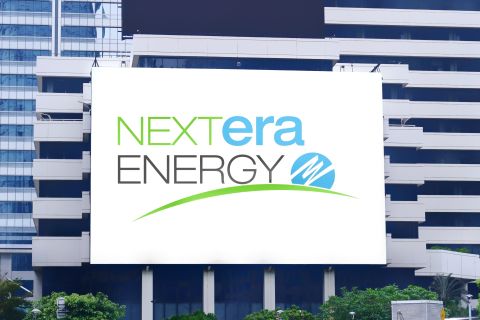
Considering what I believe investors would reward in a potential consolidation, I think there’s a set of potential good deals yet to be done, but not all potential combinations would check all the boxes, writes Steve Hendrickson, president of Ralph E. Davis Associates. (Source: Shutterstock.com)
[Editor’s note: Opinions expressed by the author are their own.]
Perhaps the long-expected wave of consolidations is finally happening in the upstream business—at least among the larger companies. The Oct. 19 announcement of the ConocoPhillips Co./Concho Resources Inc. deal follow the recently announced Devon Energy Corp./WPX Energy Inc. and Chevron Corp./Noble Energy Inc. transactions. [Editor’s note: Pioneer Natural Resources Co. also announced an agreement to acquire Parsley Energy Inc. on Oct. 20.]
Without delving into the market response to these announcements, let me reflect on what I think companies are trying to accomplish with these deals and why certain ones may ultimately create value for their investors.
Increased Scale—For the last couple of years, our analysis indicates investors have had a fairly strong preference for larger companies, based on a comparison of their total enterprise value (TEV)-to-EBITDA ratios. We’ve looked at different metrics to try to explain the range of EBITDA multiples, and found that company size is a stronger predictor than underlying decline rate (expressed PDP R/P), percentage of proved reserves that are undeveloped, or debt-to-TEV ratios. It stands to reason that investors often favor smaller companies for their growth prospects, but are currently viewing growth potential with low enthusiasm given low commodity prices, high breakeven prices and drilling results that haven’t always met expectations.
Complimentary Assets—For several reasons, combining assets that are a good fit with each other can be value-creating; for instance, improved logistics, improved buying power and application of best practices over a larger asset base.
Potential for Other Synergies—One of the primary reasons to combine companies is to achieve economies of scale and improve productivity. Examples of synergies include eliminating redundant positions, particularly management roles and adopting the best systems and work processes. It’s very common that companies have resources (human and otherwise) that have unused capacity or are engaged in lower-value activities. Combining companies often drives higher productivity, provided the cultural issues are properly managed.
Strong Balance Sheets—Following the pandemic-related commodity price declines, financial distress has become widespread in the upstream industry. Many companies are dealing with rising leverage ratios at the same time their lenders are adding more restrictive leverage covenants to their credit agreements. Since consolidations combine the assets and liabilities of the subject companies, combining two companies with weak balance sheets doesn’t solve their financial distress problem, even in the presence of potential synergies. In circumstances where only one company is in financial distress, a consolidation could still result in a combined firm that has an unacceptably weak financial position. I expect consolidations to generally include strong companies with quality assets in order to create an even stronger one.
Considering what I believe investors would reward in a potential consolidation, I think there’s a set of potential good deals yet to be done, but not all potential combinations would check all the boxes. For those companies that don’t the road ahead will likely continue to be a rough one—at least until demand and prices improve.
About the Author:
Steve Hendrickson is the president of Ralph E. Davis Associates, an Opportune LLP company. Hendrickson has over 30 years of professional leadership experience in the energy industry with a proven track record of adding value through acquisitions, development and operations. In addition, he possesses extensive knowledge of petroleum economics, energy finance, reserves reporting and data management, and has deep expertise in reservoir engineering, production engineering and technical evaluations. Hendrickson is a licensed professional engineer in the state of Texas and holds an M.S. in Finance from the University of Houston and a B.S. in Chemical Engineering from The University of Texas at Austin. He currently serves as a board member of the Society of Petroleum Evaluation Engineers and is a registered FINRA representative.
Recommended Reading
NextEra Energy Dials Up Solar as Power Demand Grows
2024-04-23 - NextEra’s renewable energy arm added about 2,765 megawatts to its backlog in first-quarter 2024, marking its second-best quarter for renewables — and the best for solar and storage origination.
Halliburton’s Low-key M&A Strategy Remains Unchanged
2024-04-23 - Halliburton CEO Jeff Miller says expected organic growth generates more shareholder value than following consolidation trends, such as chief rival SLB’s plans to buy ChampionX.
Enverus: Q1 Upstream Deals Hit $51B, But Consolidation is Slowing
2024-04-23 - Oil and gas dealmaking continued at a high clip in the first quarter, especially in the Permian Basin. But a thinning list of potential takeout targets, and an invigorated Federal Trade Commission, are chilling the red-hot M&A market.
Baker Hughes Awarded Saudi Pipeline Technology Contract
2024-04-23 - Baker Hughes will supply centrifugal compressors for Saudi Arabia’s new pipeline system, which aims to increase gas distribution across the kingdom and reduce carbon emissions
Ithaca Energy to Buy Eni's UK Assets in $938MM North Sea Deal
2024-04-23 - Eni, one of Italy's biggest energy companies, will transfer its U.K. business in exchange for 38.5% of Ithaca's share capital, while the existing Ithaca Energy shareholders will own the remaining 61.5% of the combined group.




